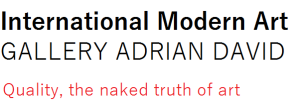James ROSENQUIST
James Rosenquist, mixed media on paper, 1975 In the 1950s, James Rosenquist still painted billboards and signs. From these techniques and subjects he emerged as a pop art artist. His monumental works, kaleidoscopic effect and bright colours emphasize the overwhelming and destructive nature of American consumer culture. His manifest oeuvre typifies a zeitgeist of consumption […]
Tony OURSLER
American multimedia artist Tony Oursler is considered a pioneer of video art in the 1970s. Using the technological possibilities of his time, he questions various facets of existing pop culture. Typical for Oursler are the moving images of faces or sense organs, projected on unusual materials. In a theatrical way he involves the viewer in […]
Yoshitomo NARA
This Japanese artist belongs to the ‘Superflat’ art movement, a form of Japanese pop art based on manga and anime. Yoshitomo Nara’s figures are mostly children, often with wide eyes and a wide spectrum of obstinate emotional expressions. A generation that defends itself, bitter and aggressive. The artist reinforces them with a weapon as an […]
Paul McCARTHY
The American artist Paul McCarthy shows solemn, obscene and macabre scenes in a theatrical way. Fairy tale characters and children’s heroes become psychopathic characters from horror films with hallucinatory, sexual excesses. His ominous sets are shocking scenes with which he questions the supposedly flawless society. McCarthy is the artist of controversy full of humor and […]
Roberto MATTA
Roberto Matta, oil and clay on canvas, 1950s Trained as an architect, Roberto Matta, born in Chile, developed into an artist. His unique style also expressed a lyrical abstraction with which he rather distanced himself from the surrealists and had a great influence on the later abstract expressionists. From an automatism, inspired by Dadaism and […]
Sol LEWITT
Sol Lewitt, painted wood, 1973 The figurehead of minimal art emphasized the conflict between what we know and what we perceive. He conceived serial systems based on mathematical laws. ‘Cube Constructure’ is a meticulous arrangement of primary squares as parts of open cubes. It is the sculptor’s intellectual cry for conceptual order and against visual […]
Yves KLEIN
Yves Klein, gouache en pigment, 1956 At the end of the 1950s, the Frenchman Yves Klein introduced his iconic ‘International Klein Blue’, with which he painted plains and shapes in a monochrome way. For his ‘Anthropometries’ he coated naked women with his ultramarine blue and rolled the models over his canvas. The elements of nature […]
Frans GENTILS
Frans Gentils, oil and charcoal on canvas and paper, 2010 From old industrial sites he often uses his workplace for his quest between fossils and the remains of human activity. His work is unmistakable and represents the growth of form at the beginning of new interpretations of our lives. With ‘the dance of the 3 […]
Kees VAN DONGEN
Kees van Dongen, charcoal, 1905 The Dutchman Kees van Dongen, who lived mainly in Paris, was one of the most important artists of Fauvism. There he united with other Fauvists through the bright use of colour and the unnatural form of his subject. With his early expressionism he demonstrates an energetic struggle for freedom in […]
Wim DELVOYE
Wim Delvoye, mixed media, 1990 With ironic ardour, Wim Delvoye walks the line of provocation and confrontation. He turns all logic upside down, thus becoming the art juggler. He subtly abates the social status with the earnestness of his perfect craftmanship. ‘Rose des Vents’, with telescopes protruding from the sculptures’ anuses, symbolizes the universality of […]
